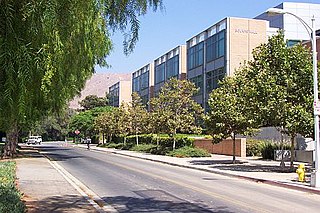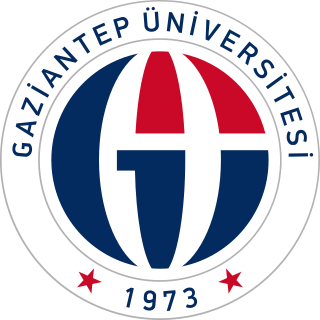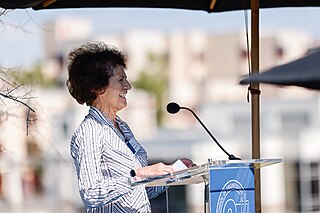
The University of California, San Diego is a public land-grant research university in San Diego, California, United States. Established in 1960 near the pre-existing Scripps Institution of Oceanography, UC San Diego is the southernmost of the ten campuses of the University of California, and offers over 200 undergraduate and graduate degree programs, enrolling 33,096 undergraduate and 9,872 graduate students. The university occupies 2,178 acres (881 ha) near the coast of the Pacific Ocean, with the main campus resting on approximately 1,152 acres (466 ha).

The University of California, Berkeley College of Engineering is the engineering school of the University of California, Berkeley, a public research university in Berkeley, California.

The Marlan and Rosemary Bourns College of Engineering, commonly known as 'Bourns Engineering' or 'BCOE', is a college of engineering at the University of California, Riverside. The college was established in 1989, and named in honor of Marlan and Rosemary Bourns, founders of Bourns, Inc. It is accredited by the Accreditation Board for Engineering and Technology.

Revelle College is the oldest residential college at the University of California, San Diego in La Jolla, California. Founded in 1964, it is named after oceanographer and UC San Diego founder Roger Revelle. UC San Diego—along with Revelle College—was founded at the height of the Space Race between the United States and the Soviet Union. As a result, the initial class of 181 undergraduates comprised only 30 non-science majors. Revelle College focuses on developing "a well-rounded student who is intellectually skilled and prepared for competition in a complex world."

The Cal Poly San Luis Obispo College of Engineering is the engineering college of the California Polytechnic State University, San Luis Obispo in San Luis Obispo, California. It has nearly 250 faculty members and more than 6,000 students enrolled in fourteen bachelor's and in eleven master's degree programs through nine engineering departments. Its facilities house more than 80 classrooms, laboratories and work spaces occupying more than 160,000 square feet. In the 2021 U.S. News & World Report's "America's Best Colleges" edition, the College of Engineering is ranked 8th out of 220 public and private undergraduate engineering schools in the U.S. where doctorates are not offered.
Santa Clara University School of Engineering was founded and began offering bachelor's degrees in 1912. Over the next century, as the Santa Clara Valley transformed from a largely agricultural area to an industrial center, the school added master and doctoral programs designed to meet the area's growing need for expert engineers. Today, the Silicon Valley provides a setting for the school's programs offered through a broad range of departments.
The School of Engineering and Applied Science (SEAS) at the George Washington University in Washington, D.C. is a technical school which specializes in engineering, technology, communications, and transportation. The school is located on the main campus of the George Washington University and offers both undergraduate and graduate programs.

Gaziantep University is a public university in Gaziantep, Turkey. Gaziantep University is one of the best universities in Turkey. It has 20 faculties with a strong emphasis on scientific and technological research.

The University of California, San Diego School of Medicine is the graduate medical school of the University of California, San Diego, a public land-grant research university in La Jolla, California. It was the third medical school in the University of California system, after those established at UCSF and UCLA, and is the only medical school in the San Diego metropolitan area. It is closely affiliated with the medical centers that are part of UC San Diego Health.

The Khajeh Nasir Toosi University of Technology is a public research university in Tehran, Iran. It is named after medieval Persian scholar Khajeh Nasir Toosi. The university is considered one of the most prestigious institutions of higher education in Iran. Acceptance to the university is highly competitive, entrance to undergraduate and graduate programs typically requires scoring among the top 1% of students in the Iranian University Entrance Exam.

San Diego State University College of Engineering provides San Diego State University students with undergraduate and graduate engineering education. The College of Engineering offers eight degree programs. The Aerospace Engineering, Civil Engineering, Computer Engineering, Electrical Engineering, Environmental Engineering, Mechanical Engineering, and Construction Engineering programs are accredited by the Engineering Accreditation Commission of ABET.

Jeanne Ferrante is an American computer scientist active in the field of compiler technology. As a Professor of Computer Science and Engineering at the University of California, San Diego's Jacobs School of Engineering, Ferrante has made important contributions regarding optimization and parallelization.

The University of Pennsylvania School of Engineering and Applied Science is the undergraduate and graduate engineering school of the University of Pennsylvania, a private research university in Philadelphia. The school offers programs that emphasize hands-on study of engineering fundamentals while encouraging students to leverage the educational offerings of the broader University. Engineering students can also take advantage of research opportunities through interactions with Penn’s School of Medicine, School of Arts and Sciences, and the Wharton School.
The College of Engineering and Applied Science is the engineering and applied science college of the University of Cincinnati in Cincinnati, Ohio. It is the birthplace of the cooperative education (co-op) program and still holds the largest public mandatory cooperative education program at a public university in the United States. Today, it has a student population of around 4,898 undergraduate and 1,305 graduate students and is recognized annually as one of the top 100 engineering colleges in the US, ranking 83rd in 2020.

The College of Engineering (CoE) is one of the three undergraduate colleges at the University of California, Santa Barbara.

The Volgenau School of Engineering is part of the George Mason University College of Engineering and Computing. Based in the Fairfax campus of George Mason University in the Commonwealth of Virginia, the Volgenau School offers programs at the B.S., M.S., and Ph.D. levels.

The Henry Samueli School of Engineering (HSSoE) is the academic unit of the University of California, Irvine that oversees academic research and teaching in disciplines of the field of engineering. Established when the campus opened in 1965, the school consists of five departments, each of which is involved in academic research in its specific field, as well as several interdisciplinary fields. The school confers Bachelor of Science, Master of Science, and Doctor of Philosophy degrees.

The John and Marcia Price College of Engineering at the University of Utah is an academic college of the University of Utah in Salt Lake City, Utah. The college offers undergraduate and graduate degrees in engineering and computer science.

The Fred DeMatteis School of Engineering and Applied Science (SEAS) is the engineering school of Hofstra University, a private university in Hempstead, New York. It was created in 2012 out of the previously existing Departments of Engineering and Computer Science. It is accredited by ABET.

Olivia Graeve is a mechanical and aerospace engineer and Professor at University of California San Diego. She is also the Director of the CaliBaja Center for Resilient Materials and Systems at UC San Diego — a binational research institute on both sides of the California-Mexico border.






















